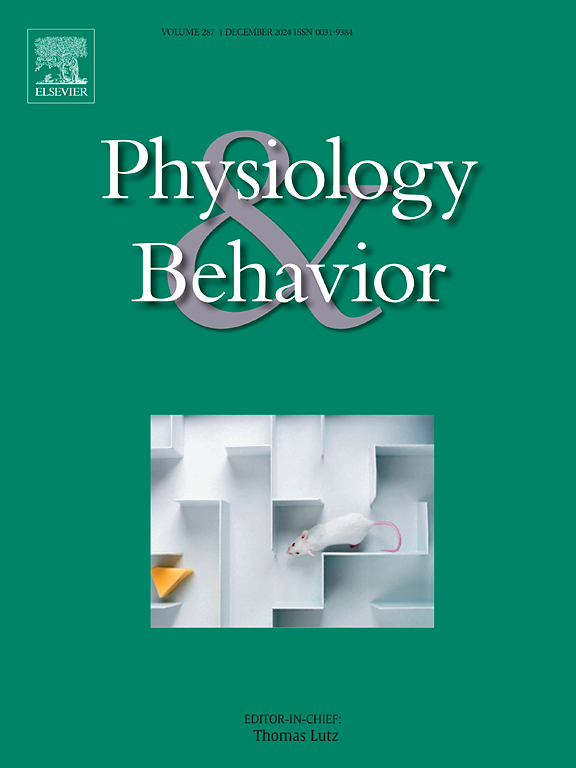医学生弹性与2D:4D手指长度比的关系研究。
IF 2.5
3区 医学
Q2 BEHAVIORAL SCIENCES
引用次数: 0
摘要
复原力被定义为适应逆境和从逆境中恢复的能力,它在减轻心理困扰方面发挥着关键作用,特别是在医学教育等高压力环境中。这项研究在德黑兰医学科学大学的医学生中调查了弹性和第二到第四指长度比(2D:4D)之间的关系,这是一种产前雄激素暴露的生物标志物。采用横断面设计,来自不同学科的240名学生参与。使用Connor-Davidson弹性量表(CD-RISC)评估弹性,使用精密数字卡尺测量2D:4D比率。结果显示,2D:4D比值与弹性评分无显著相关。然而,有当前精神疾病、自杀未遂史或自残史的参与者的适应力明显较低。针对性别的分析强调了右下角2D:4D比例与女性自残或自杀企图之间的联系,这表明可能存在生物学和社会文化的相互作用。这些发现强调了弹性是一个多因素的结构,更多地受到适应机制和环境影响的影响,而不是产前生物标志物。虽然这项研究严谨的方法增强了它的可靠性,但它对学业成绩优异的学生的关注可能会限制其普遍性。未来的研究应该结合不同的人群、纵向设计和先进的生物标志物分析,以更好地阐明恢复力的复杂决定因素。这些见解对于在高压力的学术环境中制定有针对性的心理健康干预措施至关重要。本文章由计算机程序翻译,如有差异,请以英文原文为准。
Investigating the association between resilience and the 2D:4D finger length ratio in medical students
Resilience, defined as the ability to adapt and recover from adversity, plays a critical role in mitigating psychological distress, particularly in high-stress environments like medical education. This study investigates the association between resilience and the second-to-fourth digit length ratio (2D:4D), a proposed biomarker of prenatal androgen exposure, among medical students at Tehran University of Medical Sciences. Employing a cross-sectional design, 240 students from diverse disciplines participated. Resilience was assessed using the Connor-Davidson Resilience Scale (CD-RISC), and 2D:4D ratios were measured with precision digital calipers.
Results revealed no significant correlation between 2D:4D ratios and resilience scores. However, resilience was notably lower among participants with current psychiatric disorders, a history of suicide attempts, or self-harm. Gender-specific analyses highlighted an association between lower right-hand 2D:4D ratios and self-harm or suicide attempts in females, suggesting potential biological and sociocultural interactions. These findings underscore resilience as a multifactorial construct, shaped more by adaptive mechanisms and environmental influences than by prenatal biomarkers.
While the study's rigorous methodology strengthens its reliability, its focus on academically high-performing students may limit generalizability. Future research should incorporate diverse populations, longitudinal designs, and advanced biomarker analyses to better elucidate resilience's complex determinants. These insights are pivotal for developing targeted mental health interventions in high-stress academic contexts.
求助全文
通过发布文献求助,成功后即可免费获取论文全文。
去求助
来源期刊

Physiology & Behavior
医学-行为科学
CiteScore
5.70
自引率
3.40%
发文量
274
审稿时长
47 days
期刊介绍:
Physiology & Behavior is aimed at the causal physiological mechanisms of behavior and its modulation by environmental factors. The journal invites original reports in the broad area of behavioral and cognitive neuroscience, in which at least one variable is physiological and the primary emphasis and theoretical context are behavioral. The range of subjects includes behavioral neuroendocrinology, psychoneuroimmunology, learning and memory, ingestion, social behavior, and studies related to the mechanisms of psychopathology. Contemporary reviews and theoretical articles are welcomed and the Editors invite such proposals from interested authors.
 求助内容:
求助内容: 应助结果提醒方式:
应助结果提醒方式:


